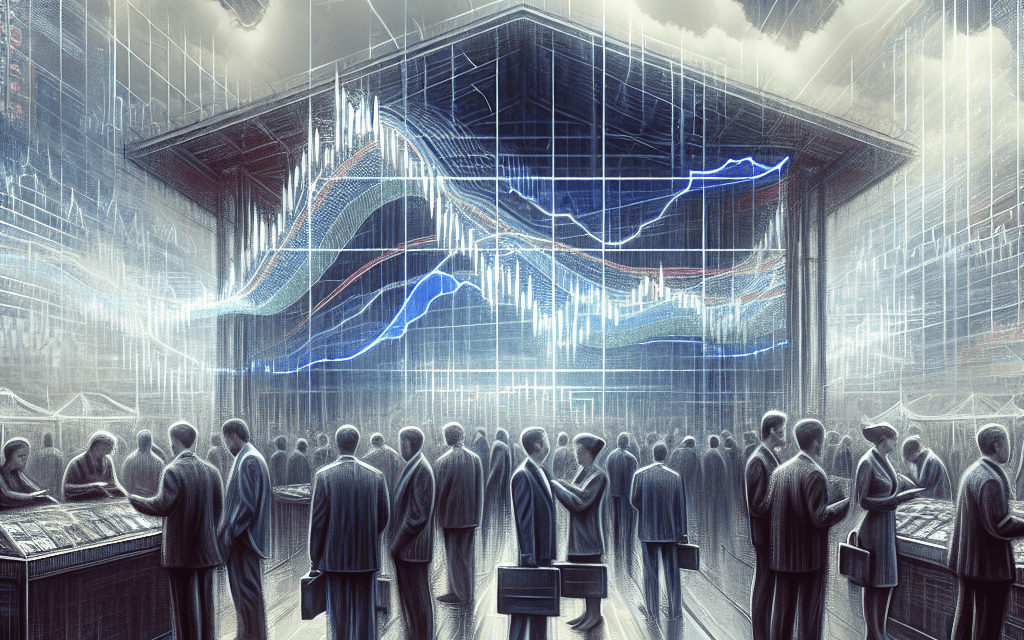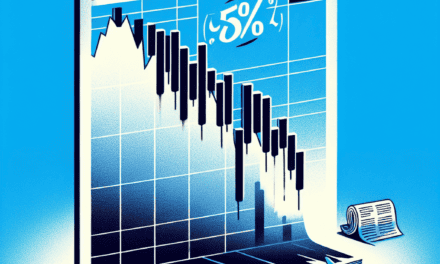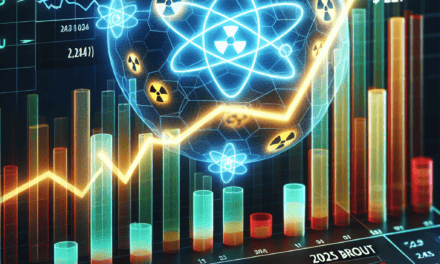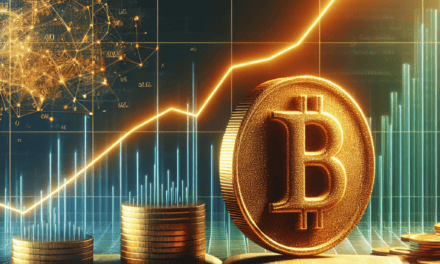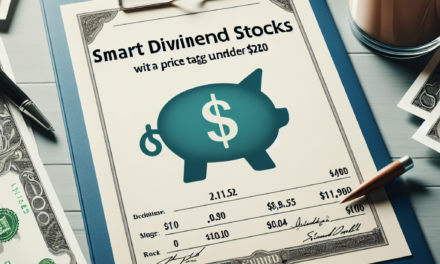“Markets Teeter: Navigating the Crossroads of US Rates and Election Uncertainty”
Introduction
Markets Waver as Traders Assess US Rates and Election Impact
In the ever-fluctuating landscape of global finance, markets are experiencing a period of volatility as traders closely monitor the implications of U.S. interest rate policies and the potential impact of upcoming elections. The Federal Reserve’s stance on interest rates remains a pivotal factor, influencing investor sentiment and market dynamics. As policymakers weigh economic indicators to determine future rate adjustments, traders are left to navigate the uncertainty surrounding monetary policy. Simultaneously, the political climate adds another layer of complexity, with elections poised to reshape economic strategies and regulatory frameworks. This confluence of economic and political factors is creating a cautious atmosphere among investors, leading to wavering market trends as they seek to anticipate and adapt to the evolving landscape.
Impact Of US Interest Rate Changes On Global Markets
The global financial markets have been experiencing a period of heightened volatility as traders and investors grapple with the implications of potential changes in U.S. interest rates and the looming impact of the upcoming elections. The U.S. Federal Reserve’s monetary policy decisions are closely watched by market participants worldwide, as they have far-reaching consequences that extend beyond domestic borders. In recent months, the anticipation of interest rate adjustments has led to fluctuations in asset prices, currency valuations, and investor sentiment across various regions.
To begin with, the prospect of rising U.S. interest rates typically exerts upward pressure on the U.S. dollar, as higher rates tend to attract foreign capital seeking better returns. This appreciation of the dollar can have a ripple effect on global markets, particularly in emerging economies that rely heavily on dollar-denominated debt. As the cost of servicing this debt increases, these countries may face financial strain, potentially leading to capital outflows and currency depreciation. Consequently, investors in these markets may become more risk-averse, prompting a reassessment of their portfolios and a shift towards safer assets.
Moreover, changes in U.S. interest rates can influence global trade dynamics. A stronger dollar makes U.S. exports more expensive and imports cheaper, potentially widening the trade deficit. This shift can impact countries that are major trading partners with the United States, as they may experience reduced demand for their exports. In turn, this can affect their economic growth prospects and lead to adjustments in their own monetary policies to counteract these effects. Thus, the interconnectedness of global economies means that U.S. interest rate decisions are not isolated events but rather catalysts for broader economic shifts.
In addition to interest rate considerations, the upcoming U.S. elections add another layer of complexity to the market landscape. Political uncertainty often leads to market volatility, as investors attempt to gauge the potential policy changes that could arise from a new administration. The outcome of the elections could influence fiscal policy, regulatory frameworks, and international relations, all of which have significant implications for global markets. For instance, changes in trade policies or tax regulations could alter the competitive landscape for multinational corporations, affecting their profitability and stock valuations.
Furthermore, the intersection of monetary policy and political developments creates a challenging environment for central banks worldwide. They must navigate the delicate balance between supporting economic growth and maintaining financial stability, all while considering the external pressures emanating from U.S. policy shifts. This task is further complicated by the ongoing recovery from the COVID-19 pandemic, which has left many economies vulnerable to external shocks.
In conclusion, the interplay between U.S. interest rate changes and the upcoming elections presents a complex and dynamic environment for global markets. As traders and investors assess these factors, they must remain vigilant and adaptable to the evolving landscape. The decisions made by the U.S. Federal Reserve and the outcome of the elections will undoubtedly shape the trajectory of global financial markets in the months to come. Therefore, understanding the interconnectedness of these elements is crucial for market participants seeking to navigate this period of uncertainty and capitalize on potential opportunities.
How The Upcoming US Election Could Influence Market Volatility
As the United States approaches another pivotal election cycle, market participants are keenly observing the potential implications on financial markets. Historically, elections have been periods of heightened uncertainty, often leading to increased market volatility. This year, the stakes are particularly high as traders also grapple with the Federal Reserve’s monetary policy decisions, which have been a significant driver of market sentiment. The interplay between these two factors—election outcomes and interest rate trajectories—could significantly influence market dynamics in the coming months.
To begin with, the upcoming election introduces a layer of unpredictability that can unsettle markets. Investors are typically concerned about potential shifts in fiscal policy, regulatory changes, and international trade relations that could arise from a change in administration or congressional control. For instance, different political parties often have divergent views on taxation, government spending, and regulatory frameworks, all of which can have profound effects on various sectors of the economy. Consequently, traders are likely to adjust their portfolios in anticipation of these potential changes, leading to fluctuations in asset prices.
Moreover, the Federal Reserve’s stance on interest rates remains a critical factor in market calculations. Over the past year, the Fed has been navigating a complex economic landscape, balancing the need to curb inflation with the desire to support economic growth. Any signals from the Fed regarding future rate hikes or cuts are closely scrutinized by market participants, as these decisions directly impact borrowing costs, consumer spending, and corporate investment. In the context of an election year, the Fed’s actions may be perceived through a political lens, adding another layer of complexity to market analysis.
In addition to these domestic considerations, global economic conditions also play a role in shaping market volatility. The interconnectedness of global markets means that developments in other major economies, such as Europe and China, can have ripple effects on US markets. For example, geopolitical tensions, trade negotiations, and economic data releases from these regions can influence investor sentiment and lead to abrupt market movements. As traders assess the potential impact of the US election, they must also remain vigilant about these external factors that could exacerbate volatility.
Furthermore, the rise of algorithmic trading and high-frequency trading has amplified market reactions to news events, including political developments. These automated systems can execute trades in milliseconds, often based on headlines or data releases, leading to rapid and sometimes exaggerated market responses. As a result, even minor political developments or shifts in polling data can trigger significant market swings, as algorithms react to perceived changes in risk.
In conclusion, the upcoming US election is poised to be a significant driver of market volatility, as traders weigh the potential implications of political outcomes alongside the Federal Reserve’s monetary policy decisions. The confluence of these factors creates a challenging environment for investors, who must navigate a landscape marked by uncertainty and rapid change. By staying informed and adopting a strategic approach, market participants can better position themselves to manage the risks and opportunities that arise during this tumultuous period. As the election draws nearer, the interplay between political developments and economic indicators will continue to be a focal point for traders seeking to anticipate and respond to market movements.
Strategies For Traders Navigating Uncertain Economic Conditions
In the ever-evolving landscape of financial markets, traders are constantly faced with the challenge of navigating uncertain economic conditions. As markets waver, particularly in response to the dual influences of U.S. interest rates and the looming impact of upcoming elections, traders must employ strategic approaches to mitigate risks and capitalize on potential opportunities. Understanding the interplay between these factors is crucial for developing effective trading strategies.
To begin with, the current economic environment is characterized by fluctuating interest rates, which have a profound impact on market dynamics. The Federal Reserve’s monetary policy decisions, particularly regarding interest rates, are closely monitored by traders as they can significantly influence asset prices. When interest rates rise, borrowing costs increase, potentially slowing down economic growth and affecting corporate profits. Conversely, lower interest rates can stimulate economic activity by making borrowing cheaper, thereby boosting consumer spending and investment. Traders must remain vigilant, analyzing economic indicators and central bank communications to anticipate rate changes and adjust their portfolios accordingly.
In addition to interest rates, the political landscape, especially in the context of upcoming elections, adds another layer of complexity to market conditions. Elections can introduce uncertainty as traders attempt to gauge the potential impact of new policies on various sectors. For instance, changes in tax policies, regulatory frameworks, or government spending priorities can have far-reaching effects on industries such as healthcare, energy, and technology. Consequently, traders need to stay informed about political developments and consider how different election outcomes might influence market sentiment and asset valuations.
Given these uncertainties, diversification emerges as a key strategy for traders. By spreading investments across a range of asset classes, sectors, and geographies, traders can reduce the impact of adverse movements in any single market. Diversification helps in balancing risk and reward, providing a buffer against volatility. Moreover, traders should consider incorporating alternative investments, such as commodities or real estate, which may exhibit different performance patterns compared to traditional stocks and bonds.
Furthermore, maintaining a flexible approach is essential in uncertain times. Traders should be prepared to adapt their strategies as new information becomes available. This might involve adjusting asset allocations, rebalancing portfolios, or employing hedging techniques to protect against downside risks. Utilizing options or futures contracts can offer traders the ability to hedge positions or speculate on market movements with a defined risk profile. Additionally, staying abreast of technological advancements and utilizing algorithmic trading tools can enhance decision-making processes, allowing traders to respond swiftly to market changes.
Moreover, risk management remains a cornerstone of successful trading strategies. Implementing stop-loss orders, setting appropriate position sizes, and maintaining a disciplined approach to trading can help mitigate potential losses. Traders should also be mindful of their emotional responses to market fluctuations, as fear and greed can cloud judgment and lead to impulsive decisions. By adhering to a well-defined trading plan and maintaining a long-term perspective, traders can navigate uncertain economic conditions with greater confidence.
In conclusion, as traders assess the impact of U.S. interest rates and elections on financial markets, adopting a strategic approach is paramount. By understanding the interplay between these factors, diversifying portfolios, remaining flexible, and prioritizing risk management, traders can better position themselves to navigate the complexities of uncertain economic conditions. Through careful analysis and disciplined execution, traders can seize opportunities while safeguarding their investments in an ever-changing market environment.
Historical Analysis: Market Reactions To US Elections
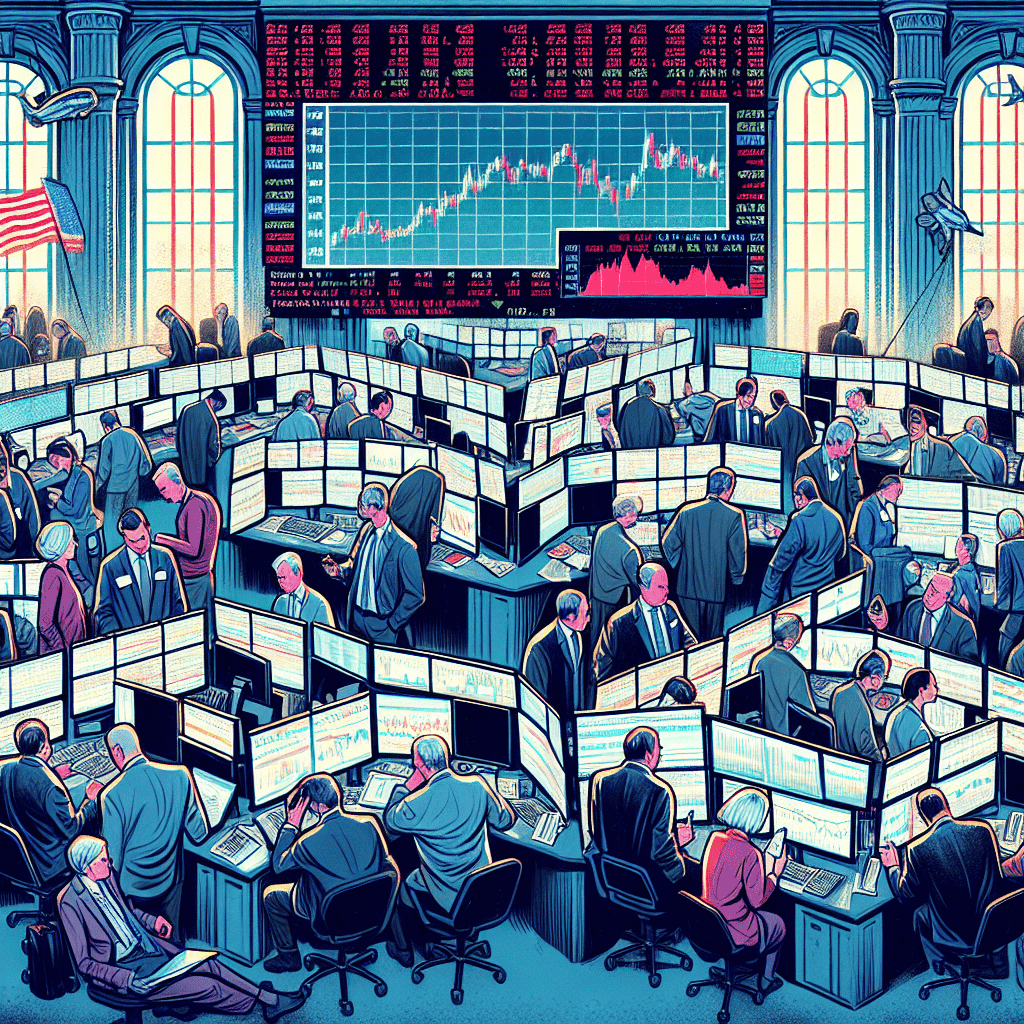
Throughout history, financial markets have exhibited varying degrees of volatility in response to U.S. elections, reflecting the complex interplay between political developments and economic expectations. As traders assess the potential impact of U.S. interest rates and election outcomes, it is crucial to understand the historical context of market reactions to these pivotal events. By examining past elections, we can gain insights into how markets might respond to the current political and economic landscape.
Historically, U.S. elections have been significant events for financial markets, often leading to increased volatility as investors grapple with the uncertainty surrounding potential policy changes. For instance, the 2000 presidential election, marked by the contentious Bush-Gore contest, resulted in a prolonged period of market uncertainty. The delayed resolution of the election, due to the Florida recount, led to heightened volatility in the stock market, as investors were unsure of the future policy direction. This uncertainty was compounded by concerns over the economic outlook, as the dot-com bubble had begun to burst, further exacerbating market instability.
Similarly, the 2008 election, which saw Barack Obama ascend to the presidency amid the global financial crisis, was another period of significant market turbulence. The financial markets were already in turmoil due to the collapse of major financial institutions, and the election added an additional layer of uncertainty. Investors were keenly focused on the incoming administration’s plans to address the crisis, and any perceived delays or ambiguities in policy announcements contributed to market volatility. The eventual implementation of stimulus measures and financial reforms helped stabilize the markets, but the initial reaction to the election was one of caution and uncertainty.
In contrast, the 2016 election, which resulted in Donald Trump’s unexpected victory, demonstrated a different market dynamic. Initially, futures markets reacted negatively to the surprise outcome, reflecting concerns over potential policy shifts and geopolitical implications. However, as traders began to anticipate pro-business policies, such as tax cuts and deregulation, the markets quickly rebounded, leading to a sustained rally. This reaction underscored the importance of policy expectations in shaping market responses to election outcomes.
As we consider the current environment, traders are once again faced with the dual challenges of assessing U.S. interest rates and the potential impact of upcoming elections. The Federal Reserve’s monetary policy decisions, particularly in relation to interest rates, play a crucial role in shaping market expectations. Historically, periods of rising interest rates have often led to increased market volatility, as investors adjust their portfolios in response to changing economic conditions. The interplay between monetary policy and election outcomes adds an additional layer of complexity, as traders must weigh the potential for policy shifts against the backdrop of evolving economic indicators.
In conclusion, the historical analysis of market reactions to U.S. elections reveals a pattern of heightened volatility driven by uncertainty and policy expectations. As traders navigate the current landscape, understanding these historical precedents can provide valuable insights into potential market dynamics. By considering the lessons of past elections and the influence of interest rates, investors can better position themselves to respond to the challenges and opportunities that lie ahead. As always, the key to navigating these turbulent times lies in maintaining a balanced perspective and remaining vigilant in the face of uncertainty.
The Role Of Central Banks In Stabilizing Markets Amid Political Uncertainty
In the ever-evolving landscape of global finance, the role of central banks in stabilizing markets amid political uncertainty has become increasingly pivotal. As traders assess the implications of U.S. interest rates and the potential impact of upcoming elections, central banks find themselves at the forefront of efforts to maintain economic equilibrium. The interplay between monetary policy and political events is complex, yet central banks strive to navigate these challenges with precision and foresight.
To begin with, central banks, such as the Federal Reserve in the United States, wield significant influence over financial markets through their control of interest rates. By adjusting these rates, central banks can either stimulate economic activity or rein in inflationary pressures. In times of political uncertainty, such as during election cycles, the decisions made by central banks become even more critical. Traders and investors closely monitor these decisions, as they can signal the central bank’s assessment of economic conditions and its approach to mitigating potential risks.
Moreover, political events, particularly elections, can introduce volatility into financial markets. The uncertainty surrounding election outcomes often leads to fluctuations in investor sentiment, which can, in turn, impact market stability. In such scenarios, central banks play a crucial role in providing reassurance to markets. Through clear communication and strategic policy measures, they aim to mitigate the adverse effects of political uncertainty. For instance, central banks may choose to maintain a steady course in their monetary policy to avoid exacerbating market volatility during election periods.
Furthermore, the relationship between central banks and political entities is inherently delicate. While central banks operate independently, their actions are often influenced by the broader political environment. This dynamic can create challenges, as central banks must balance their mandate to ensure economic stability with the need to remain apolitical. In times of heightened political tension, maintaining this balance becomes even more essential. Central banks must carefully consider the potential ramifications of their policy decisions, ensuring that they do not inadvertently become embroiled in political debates.
In addition to interest rate adjustments, central banks have a range of tools at their disposal to stabilize markets. Quantitative easing, for example, involves the purchase of government securities to increase the money supply and encourage lending and investment. This tool can be particularly effective in times of political uncertainty, as it provides liquidity to markets and supports economic growth. By employing such measures, central banks can help to cushion the impact of political events on financial markets, fostering a more stable economic environment.
As traders continue to assess the implications of U.S. interest rates and the potential impact of elections, the role of central banks remains indispensable. Their ability to navigate the complexities of monetary policy amid political uncertainty is crucial for maintaining market stability. Through careful analysis and strategic decision-making, central banks strive to uphold their mandate of economic stability, even in the face of unpredictable political landscapes. As such, their actions will continue to be closely scrutinized by traders and investors alike, underscoring the enduring importance of central banks in the global financial system.
Investor Sentiment: Gauging Market Confidence During Election Years
Investor sentiment often experiences heightened volatility during election years, as market participants grapple with the potential implications of political shifts on economic policies. This year is no exception, with traders closely monitoring the interplay between U.S. interest rates and the upcoming elections. As the Federal Reserve continues to navigate the delicate balance between curbing inflation and fostering economic growth, its decisions on interest rates have become a focal point for investors. The central bank’s actions are scrutinized not only for their immediate economic impact but also for how they might influence voter sentiment and, consequently, election outcomes.
In this context, the Federal Reserve’s recent signals regarding interest rate adjustments have added a layer of complexity to market dynamics. On one hand, higher interest rates are typically seen as a tool to combat inflation, which has been a persistent concern for both policymakers and the public. On the other hand, elevated rates can dampen economic activity by increasing borrowing costs, potentially leading to slower growth. This duality presents a conundrum for investors, who must weigh the benefits of inflation control against the risks of an economic slowdown.
Moreover, the political landscape further complicates the investment environment. Election years inherently bring uncertainty, as changes in administration can lead to shifts in fiscal and regulatory policies. Investors are particularly attuned to how these potential changes might affect key sectors such as healthcare, energy, and technology. For instance, a government favoring renewable energy initiatives could boost investments in green technologies, while a focus on traditional energy sources might benefit fossil fuel industries. Thus, traders are keenly analyzing candidates’ platforms and their potential impact on various market segments.
Adding to the complexity is the global economic backdrop, which remains fraught with challenges. Geopolitical tensions, supply chain disruptions, and fluctuating commodity prices continue to exert pressure on markets worldwide. These factors, combined with domestic political uncertainties, create a volatile environment where investor confidence can be easily swayed. Consequently, market participants are increasingly relying on a mix of economic indicators, corporate earnings reports, and political developments to guide their investment strategies.
In light of these considerations, it is crucial for investors to adopt a nuanced approach when assessing market confidence during election years. Diversification remains a key strategy, allowing investors to mitigate risks associated with sector-specific volatility. Additionally, maintaining a long-term perspective can help navigate short-term market fluctuations driven by political events. By focusing on fundamental economic indicators and corporate performance, investors can better position themselves to weather the uncertainties inherent in election years.
Furthermore, communication from policymakers plays a vital role in shaping investor sentiment. Clear and consistent messaging from the Federal Reserve and government officials can help alleviate market anxieties by providing a sense of direction and stability. As such, transparency in policy intentions and economic forecasts is essential to fostering a more predictable investment climate.
In conclusion, as traders assess the interplay between U.S. interest rates and the upcoming elections, market confidence remains in a state of flux. The intricate web of economic, political, and global factors necessitates a careful and informed approach to investing. By staying attuned to these dynamics and employing sound investment strategies, market participants can better navigate the challenges and opportunities that election years present.
Comparing Market Trends: Pre-Election Versus Post-Election Periods
As financial markets navigate the complexities of economic indicators and geopolitical events, the period surrounding U.S. elections often presents a unique set of challenges and opportunities for traders. Historically, the pre-election and post-election phases have exhibited distinct market behaviors, influenced by the anticipation and aftermath of electoral outcomes. Understanding these trends is crucial for investors seeking to optimize their strategies in response to shifting political landscapes and monetary policies.
In the months leading up to an election, markets typically experience heightened volatility as traders attempt to predict the potential impact of various electoral outcomes on fiscal and monetary policies. This period is often characterized by uncertainty, as investors weigh the implications of different candidates’ economic agendas. For instance, discussions around tax reforms, regulatory changes, and government spending can significantly sway market sentiment. Consequently, traders may adopt a cautious approach, adjusting their portfolios to hedge against potential risks while remaining poised to capitalize on emerging opportunities.
Moreover, the Federal Reserve’s monetary policy decisions play a pivotal role in shaping market dynamics during the pre-election period. As the central bank assesses economic indicators such as inflation, employment, and GDP growth, its stance on interest rates can either amplify or mitigate market volatility. Traders closely monitor the Fed’s communications for any hints of policy shifts, as these can influence asset prices and investor confidence. In this context, the interplay between electoral uncertainty and monetary policy becomes a critical factor in determining market trends.
Transitioning to the post-election period, markets often experience a shift in focus as the immediate uncertainty surrounding the election outcome dissipates. With a clearer understanding of the political landscape, investors can better assess the potential implications of the new administration’s policies. This clarity often leads to a recalibration of market expectations, as traders adjust their strategies to align with the anticipated policy direction. For example, sectors that are expected to benefit from the new administration’s agenda may see increased investor interest, while those facing potential regulatory challenges might experience a decline in demand.
Furthermore, the post-election period provides an opportunity for the Federal Reserve to reassess its monetary policy stance in light of the new administration’s economic priorities. Any changes in fiscal policy, such as increased government spending or tax cuts, can influence the central bank’s approach to managing inflation and economic growth. As a result, traders remain vigilant, analyzing the potential impact of these policy shifts on interest rates and market liquidity.
In comparing market trends between the pre-election and post-election periods, it becomes evident that the transition from uncertainty to clarity plays a significant role in shaping investor behavior. While the pre-election phase is often marked by caution and volatility, the post-election period tends to bring a sense of direction and stability, allowing traders to make more informed decisions. However, it is essential to recognize that each election cycle is unique, with its own set of variables and external factors influencing market dynamics.
In conclusion, the interplay between U.S. elections and market trends underscores the importance of understanding the broader economic and political context in which traders operate. By analyzing historical patterns and remaining attuned to current developments, investors can better navigate the complexities of pre-election and post-election market environments, ultimately enhancing their ability to achieve favorable outcomes in an ever-evolving financial landscape.
Q&A
1. **Question:** What factors are causing market fluctuations currently?
– **Answer:** Market fluctuations are being caused by traders assessing US interest rate changes and the potential impact of upcoming elections.
2. **Question:** How are US interest rates influencing market behavior?
– **Answer:** Changes in US interest rates can affect borrowing costs, consumer spending, and investment, leading to market volatility as traders adjust their strategies.
3. **Question:** What role do elections play in market uncertainty?
– **Answer:** Elections can introduce uncertainty due to potential policy changes, affecting investor confidence and market stability.
4. **Question:** Which sectors are most affected by interest rate changes?
– **Answer:** Sectors such as real estate, banking, and consumer goods are typically most affected by interest rate changes due to their reliance on borrowing and consumer spending.
5. **Question:** How might traders hedge against election-related risks?
– **Answer:** Traders might hedge against election-related risks by diversifying portfolios, using options and futures, or investing in traditionally stable assets like gold.
6. **Question:** What indicators are traders watching to gauge market direction?
– **Answer:** Traders are watching indicators such as Federal Reserve announcements, economic data releases, and political polls to gauge market direction.
7. **Question:** How can geopolitical events influence market trends during election periods?
– **Answer:** Geopolitical events can exacerbate market trends by adding layers of uncertainty, affecting global trade, and influencing investor sentiment during election periods.
Conclusion
The financial markets are experiencing volatility as traders navigate the dual uncertainties of U.S. interest rate policies and the potential implications of upcoming elections. The Federal Reserve’s stance on interest rates remains a focal point, with investors closely monitoring any signals that could indicate future monetary policy adjustments. Concurrently, the political landscape adds another layer of complexity, as election outcomes could significantly influence economic policies and market dynamics. This confluence of factors is contributing to market fluctuations, as traders attempt to balance these uncertainties with their investment strategies. Ultimately, the interplay between monetary policy and political developments will continue to shape market sentiment and investor behavior in the near term.

